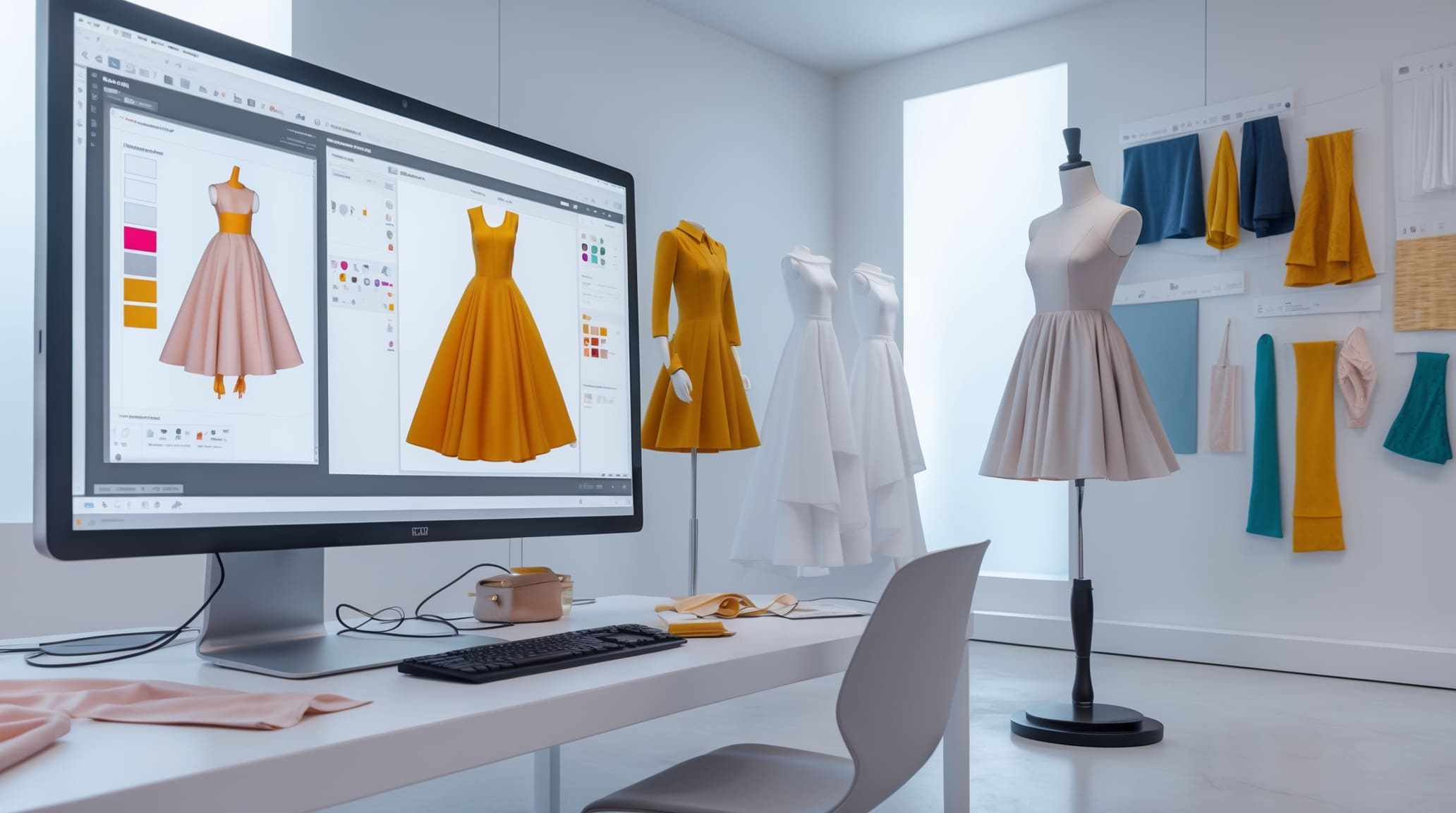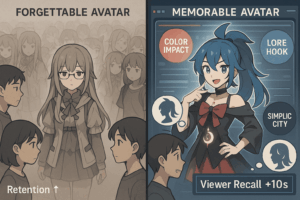The fashion industry is undergoing a digital revolution, with 3D simulation emerging as a game-changer for fashion designers and fashion brands. The traditional design process, which relied heavily on physical samples and multiple iterations, is being replaced by virtual prototyping, digital patterns, and augmented reality tools that speed up garment production and improve overall production speed.
This shift is not just about efficiency, it is transforming how designers create clothing, how consumers interact with virtual fashion, and how brands embrace a sustainable approach to reduce material waste. According to a 2024 McKinsey report, over 70% of fashion companies have already started integrating 3D fashion design into their design development process, and this number is expected to grow rapidly.
In this blog, we’ll explore how 3D simulation is reshaping the fashion industry, cutting costs, improving e-commerce experiences, and enabling a stronger brand affinity with customers.
The Limitations of Traditional Fashion Design
For decades, fashion designers followed a manual process that involved sketching ideas, developing physical prototypes, adjusting pattern pieces, and conducting multiple rounds of fittings before finalizing a garment. While this approach has worked, it comes with significant drawbacks:
- Time-consuming: The development process can take 4-6 months, delaying product launches.
- Expensive: Multiple rounds of physical samples lead to high costs in pattern making, fabric sourcing, and labor.
- Material Waste: Excessive physical prototypes contribute to fabric waste, increasing the environmental footprint.
- Limited Flexibility: Making design modifications late in the process is difficult and expensive.
As the fashion industry faces growing pressure to reduce waste, enhance production speed, and offer interactive experiences to customers, 3D simulation is becoming the go-to solution.
The Evolution of 3D Simulation in Fashion
The adoption of 3D simulation in fashion design has been growing steadily over the last decade. According to a 2023 report by McKinsey, digital transformation in the fashion industry has accelerated, with over 75% of fashion brands investing in fashion design software and 3D virtual tools.
Top luxury brands like Louis Vuitton and Hugo Boss are leveraging virtual prototyping to hold virtual fittings and create runway animations that showcase garments in a virtual reality setting before producing physical garments.
This shift has been driven by key industry challenges:
- The increasing cost of physical samples.
- Rising consumer expectations for virtual clothing and interactive experiences.
- The push for sustainability by reduce material waste and cutting down on excessive garment production.
- The need for faster turnaround times in e-commerce platforms.
How 3D Simulation Transforms the Design Process?
Traditional fashion designers spend weeks, sometimes months, creating physical prototypes, adjusting pattern pieces, and conducting multiple fittings before finalizing a design. With 3D fashion design, these steps can be completed in days or even hours using fashion design software like Marvelous Designer and CLO 3D.
1. Faster and More Efficient Prototyping
- 3D simulation allows designers to visualize graphic patterns, fabric drapes, and stitching details instantly.
- Pattern makers can refine digital patterns before moving to physical prototypes, reducing waste.
- Virtual samples reduce the need for physical garments, cutting production speed by up to 30%, as per a 2024 report by Forbes.
For example, Hugo Boss reduced prototype development time by 50% after implementing 3D fashion design software, allowing their collections to be designed and approved at a much faster rate.
2. Virtual Fittings and Augmented Reality Try-Ons
- Brands can hold virtual fittings using AR technology and virtual reality, ensuring that garments fit sooner without excessive physical alterations.
- Online shoppers can try virtual fashion pieces in virtual fitting rooms, leading to higher engagement on e-commerce platforms.
According to Statista, 61% of online shoppers are more likely to purchase a product if they can visualize it through 3D simulation before buying. This approach significantly reduces product returns, a major challenge in the fashion industry.
3. Reduced Material Waste and a Sustainable Approach
- The fashion sector is responsible for 10% of global carbon emissions (UN Environment Programme). By replacing physical samples with 3D virtual models, brands can significantly lower their environmental footprint.
- Digital twins eliminate excess fabric use, reducing material waste by up to 35% in the design development process.
Louis Vuitton, for instance, has incorporated virtual prototyping into its design workflow, minimizing its reliance on physical prototypes and cutting textile waste.
Impact of 3D Simulation on Fashion Businesses
The fashion industry operates at a high pace, where trends shift rapidly. Companies that integrate 3D simulation into their business gain an edge in overall production speed, cost reduction, and customer experience.
1. Cost Savings in Garment Production
- Traditional garment production involves multiple rounds of physical prototypes, increasing costs.
- 3D garment visualization minimizes the number of required prototypes, reducing costs by up to 50%, as reported by the Boston Consulting Group.
For example, apparel companies like Adidas and Nike use fashion design software to develop 3D fashion design concepts before mass production, significantly cutting expenses.
2. Enhanced Customer Engagement in E-commerce
With the rise of e-commerce platforms, virtual clothing and augmented reality try-ons create immersive experiences for customers. Shoppers can now see how an outfit would look on them before purchasing, improving confidence and reducing returns. According to Shopify, brands implementing AR technology and virtual reality in online shopping saw a 94% increase in conversions compared to those relying on static images.
3. Shorter Design Workflow and Faster Time to Market
Brands can now experiment with design ideas, test graphic patterns, and finalise entire collections without the need to physically produce every version. This digital approach simplifies processes like pattern making, cutting, and silhouette checks. As a result, companies can bring products to market up to 40% faster than with traditional methods.
From Physical Samples to Digital Creation: 3D Simulation Is A Game-Changer for Fashion Designers
For decades, fashion designers have relied on physical samples to test fit, structure, and finishing details before mass production. However, this process is time-consuming, costly, and contributes to a significant environmental impact due to wasted fabric and resources. The shift to 3D design is changing this, offering a broad spectrum of possibilities for designing garments with greater precision and speed.
The Limitations of Physical Samples
Traditional physical samples require multiple iterations, often leading to delays and increased costs. Brands must source fabric, cut patterns, and sew prototypes, only to discard them if adjustments are needed. This inefficient process is particularly challenging for fast-paced brands facing a growing demand for rapid creation and production.
How Fashion Designers Benefit from 3D Design?
With the rise of software programs like CLO 3D and Marvelous Designer, fashion designers can now create 3D design prototypes without the need for actual fabric. These tools allow for:
- Instant Adjustments: Changes in silhouette, material, and finishing details can be made digitally.
- Node-Based Workflow: Designers can streamline pattern edits using a structured node-based workflow, improving efficiency.
- Saving Time: The digital process eliminates unnecessary physical iterations, drastically cutting production time.
The Role of Educational Institutions in Training Future Designers
As the fashion industry embraces digital transformation, educational institutions are incorporating software programs into their curricula. Fashion schools worldwide are teaching students 3D design and node-based workflows to prepare them for the future.
A Sustainable Approach for the Fashion World
Switching from physical samples to digital prototypes not only enhances efficiency but also significantly reduces the environmental impact of designing garments. The fashion world can move toward a more sustainable future by eliminating fabric waste and unnecessary shipments. The shift to 3D design is not just a trend, it’s the future of fashion. With a broad spectrum of digital tools, fashion designers can bring their visions to life faster, smarter, and with minimal waste.
The Future of 3D Simulation in the Fashion Industry
The use of 3D simulation is expected to double by 2030, as the demand for sustainable fashion and digital innovation continues to grow. The fashion industry is embracing digital transformation at full speed. Digital twins are now widely used for design, production, and marketing, helping brands reduce their dependence on physical garments. AI and automation are also streamlining the process, with intelligent tools making pattern-making and garment creation faster and more efficient. Meanwhile, virtual fashion is gaining momentum in the metaverse, becoming a key player in gaming and online shopping experiences.
According to Deloitte, by 2028, virtual prototyping will be the standard for apparel companies, with over 80% of fashion brands implementing 3D garment technology into their design process.
Conclusion
The fashion industry is rapidly shifting towards 3D simulation, transforming how fashion designers and fashion professionals create clothing. By reducing reliance on physical samples, enhancing virtual fittings, and improving overall production speed, 3D fashion design is redefining the way brands operate. This digital innovation not only speeds up the development process but also promotes a sustainable approach by minimizing material waste. At 3DAiLY, we specialize in high-quality 3D fashion design solutions that accelerate the design workflow and enhance e-commerce experiences. Ready to bring your fashion industry vision to life? Let’s create ultrarealistic images and immersive interactive experiences together!



